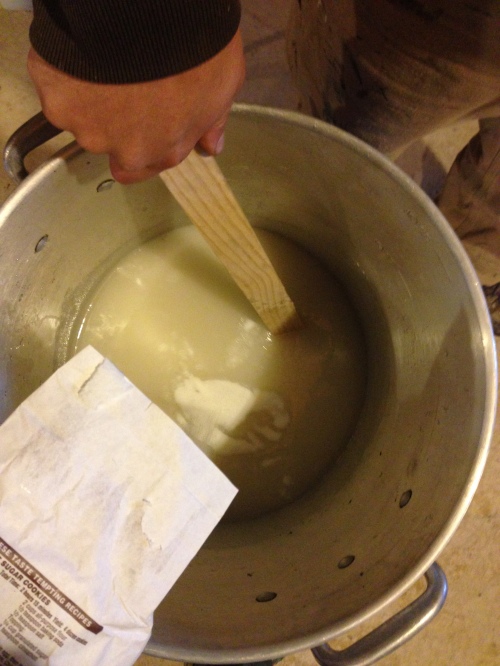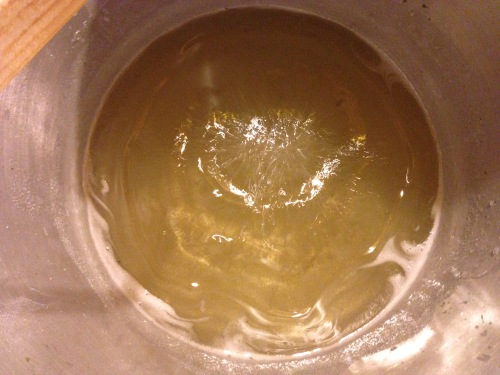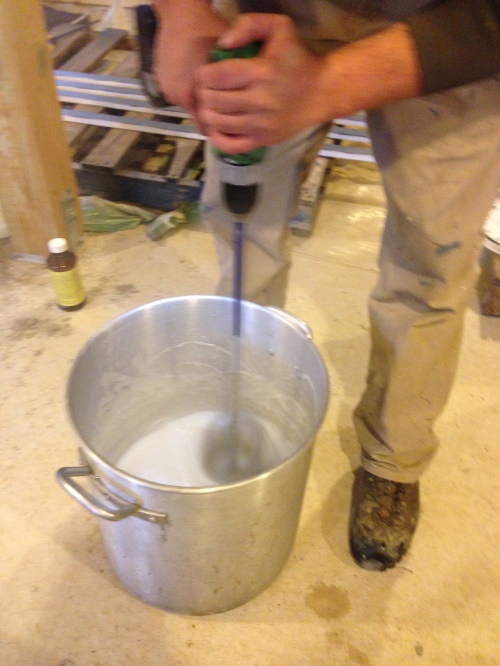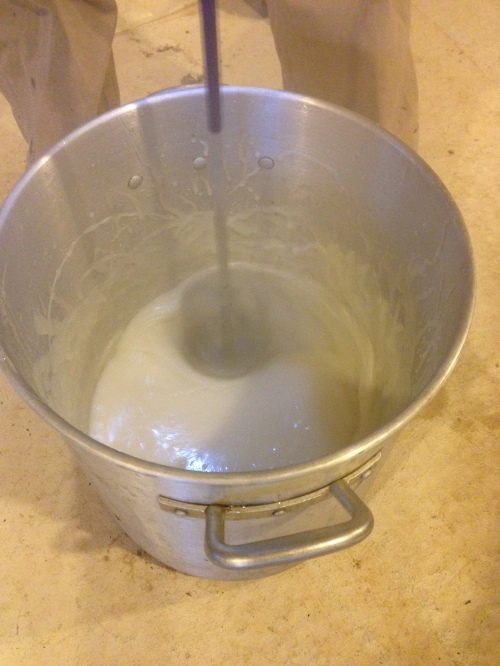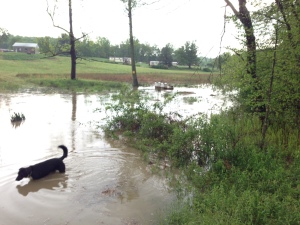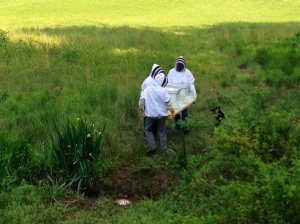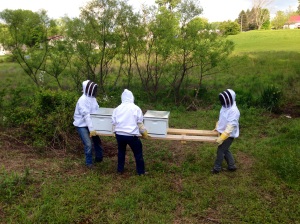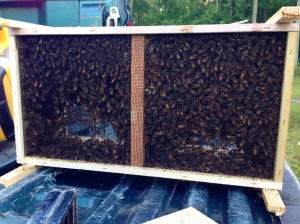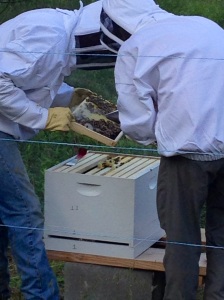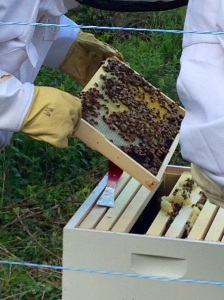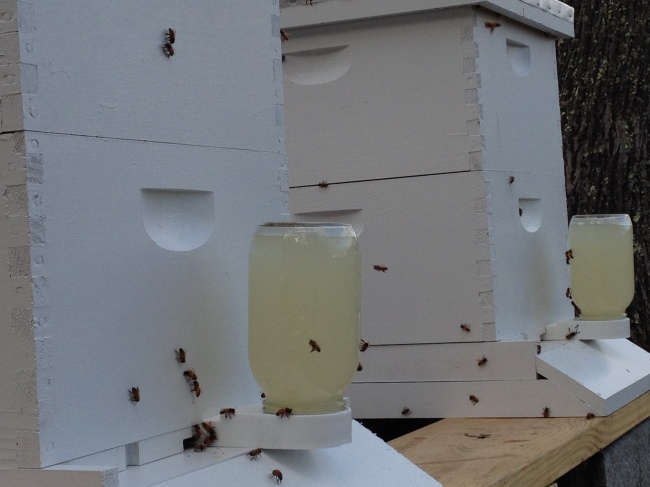A new bee colony is like a small child. When it first shows up you are nervous as heck to hold them; you spend a good amount of time feeding them with little thanks; you worry about their safety and well-being and when it comes time to say good-bye to them (for the winter months), you want to make sure they are well fed and going to stay warm. After an entire summer of caring for and checking on your hive, it would be a terrible waste and huge bummer to come back in the spring and find that your bee-kids didn’t have enough food to get them through the winter months and you are left with an empty hive.
But it doesn’t have to come down to that! You don’t have to come back in the spring to find that your bees starved through the winter and didn’t make it. By taking just one final step of caring for them before saying goodbye for the winter, you can help ensure they make it through the cold, barren months. If you started the spring with a brand new colony of bees, you are probably no stranger to feeding them sugar water to get them through the slow start of spring and summer. Unfortunately with cold weather, the less you disturb your colony the better, not to mention that sugar water freezes in the winter! So what is the better winter solution? FONDANT! Not the fancy, expensive stuff you put on your cakes – the homemade kind. What you would expect out of a homesteader J
As I have mentioned in past posts, our queen bee was not doing her job all summer and our hive had barely produced any honey for them to live off of for the winter. Ideally you want to have 2 hive bodies filled with sugar plus a smaller honey super to get them through the winter. Our hive didn’t even have 1 full hive body. Not good at all. While we have had a top feeder on our hive for the last few months providing them with up to 1 ½ gallons of sugar water at a time (so long as it wasn’t cold enough to freeze), there still wasn’t enough stored honey to make us feel comfortable leaving them for the entire winter. Once winter comes around and temperatures are cold, you cannot get into your hive at all. Any extra stress, or blasts of cold air would definitely not help their survival.
In the end I referenced a few different sites, taking bits of information from each of them to create my recipe.
http://www.bamboohollow.com/fondant-recipe.php
http://www.colonialbeekeepers.com/index.php/faqs-mainmenu-25/76-how-to-make-fondant
The basic recipe is:
- 4 parts sugar:1part water
- ¼ tsp vinegar for each pound of sugar
- Honey B Healthy
You will also need:
- A large pot (we used a large turkey fryer pot)
- A long handled spoon to stir with (splattering boiling liquid sugar on your hands is not a good time)
- Accurate thermometer (this has always been the most frustrating thing for me. I have 4 different thermometers in my house and they all read different)
- Hand mixer – a paint stirrer that attaches to a drill is ideal
- Some time – depending on the size of your batch it may take a while for everything to come to temperature
Some good tidbits of information:
- 1 quart of water weighs approximately 2 pounds
- The mixture should come to an initial boil at approximately 220 degrees
Since we needed so much fondant for our hive, we filled out top inner cover and 1-side of 6 super frames. For this we used 16 lbs of sugar and 2 quarts of water. We also used a turkey fryer outside in our barn to help keep down on extra steam in the kitchen…plus we just happened to be out there working anyway.
Directions:
- Add the water to the pot and slowly add the sugar while stirring (the heat can be on at this point).
- Add 1/4 tsp of vinegar/pound of sugar. This helps the sugar not crystallize too much and stay smooth. It also helps convert the sugar from sucrose into a glucose structure which is better for the bees.
- Bring to a boil while stirring often to make sure it doesnt stick and burn – this took us a little bit of time (but we were also using our turkey fryer with a really low tank of propane)
- It should start to boil at around 220 degrees and turn clear.
- Keep boiling until the water evaporates off and the temperature is 234 degrees (remember back to high school chemistry: Water with a higher concentration of particles in it (eg – sugar) has a higher boiling point and lower freezing point).
- Cool the mixture down to 200 degrees – luckily we had a bunch of buckets outside collecting water which were half frozen – we dumped that water into a wheelbarrow and placed the metal pot in the water and it took no time to cool our mixture down. Keep stirring as the mixture is cooling down as it will begin to thicken.
- Add the Honey B Healthy. I didnt know how much to add. There was only 1 site that mentioned using it and it said 1 cup/5 lbs of sugar which seems a little over the top considering you only use ½ tsp per gallon of sugar water in the spring and fall. Overall I added about 2 tsp for my entire batch.
- Use the hand mixer or paint stirrer to whip the mixture. It will turn white and get thicker – it will also be cooling down as you do this.
- Whip it until it is relatively thick. You want to be able to pour it but don’t want it slopping all over the place. It will cool pretty quickly once you start to pour it out. By the end my husband and I were using our hands to scoop it out and mold it into the last few frames.
- Let the fondant cool and place in your hive when the weather is good.
The whole process is not too hard, just sort of time consuming while bringing it up to boil. We made sure that the frames were on top of wax paper so it didn’t make a mess, but the mixture was so thick we didn’t have too much leak out the cracks. Also make sure that you put some tape over the back side of the inner cover hole until the mixture cools, then you can punch out the hole so the bees can still crawl through and to help with ventilation. As another measure of precaution, we left our top feeder on the hive as well. While the sugar water in it may freeze over the winter, if there are warm days, it will melt and provide extra food for them. The top feeder is also nice because less cold air can get into the hive if you lift off the cover to fill the feeder quick.
And so now our waiting game starts. It won’t be until sometime in the spring that we are able to get into our hive and see if they survived through the winter; but at least if they don’t it wasn’t for lack of trying on our part.



